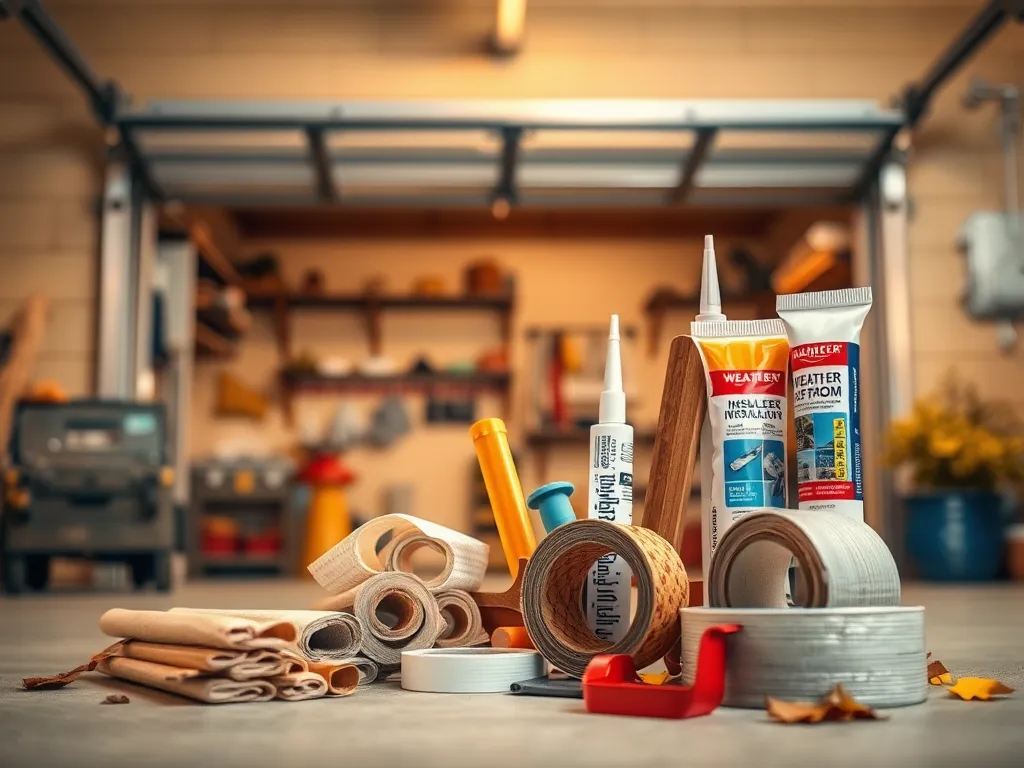Essential Guide to Garage Door Weatherproofing Tips

Comprehensive Guide to Garage Door Weatherproofing
Garage Door Weatherproofing is an essential aspect of home maintenance that focuses on sealing and insulating the garage door to withstand various weather conditions. Effective weatherproofing not only protects your garage environment from cold drafts, moisture, and pests but also contributes to energy efficiency and comfort in your home. In this guide, we will explore the materials, installation techniques, maintenance, benefits, and troubleshooting methods involved in ensuring your garage door remains well-protected throughout the year.
The process of Garage Door Weatherproofing involves a systematic approach to identify vulnerable areas of your garage door that can allow unauthorized air and moisture to enter. This guide outlines various methods, materials, and practices to ensure that your garage door is fortified against environmental elements. By understanding the benefits and techniques for weatherproofing, homeowners can ensure longevity and efficiency in their garage's functioning.
Regular maintenance and timely updates to your garage door’s weatherproofing can significantly improve its durability and effectiveness. Homeowners should be proactive in checking for wear and tear of weather seals, ensuring that the insulation remains intact, and applying appropriate weather-resistant coatings. This preventive approach not only keeps the garage door functional but also enhances the overall aesthetic of the property.
Applying effective garage door sealing techniques can significantly reduce energy loss and improve your home’s comfort.
To achieve optimum Garage Door Weatherproofing, it is crucial to consider seasonal changes and the impact these can have on your weatherproofing materials. Ensuring that your garage door is equipped with the right materials and techniques during severe weather conditions can prevent costly damages and maintain a comfortable indoor environment. This guide provides comprehensive insights that will help you weatherproof your garage door effectively.
In conclusion, Garage Door Weatherproofing is a vital home improvement endeavor that requires knowledge, the right materials, and consistent care. From understanding the materials needed to the importance of proper installation and maintenance, this article aims to equip homeowners with the necessary tools to combat weather-related concerns and optimize their garage's performance.
To enhance your garage's energy efficiency, consider how to weatherstrip your garage against drafts and moisture intrusion.
Materials for Weatherproofing
When it comes to Garage Door Weatherproofing, various materials can be utilized to create a protective barrier against environmental elements. Key materials include weatherstripping, which can be made from rubber or foam, and is essential for sealing gaps between the door and the frame. Gaskets are also integral components; they help in eliminating drafts and moisture by providing a tight seal.
Implementing smart garage insulation tips can transform your garage into a year-round usable space.
Additionally, weather-resistant paints and coatings can be applied to the exterior of the garage door to fend off moisture and prevent rust and corrosion. These coatings not only protect the door but also enhance its appearance. This layer of protection is pivotal for wooden and metal doors that are exposed to harsh weather conditions.
Insulation materials are also crucial for Garage Door Weatherproofing. Using polystyrene or polyurethane insulated panels helps to regulate the temperature inside the garage, preventing freezing in winter and excessive heat in summer. Proper insulation is vital for maintaining a comfortable environment and conserving energy.
Lastly, waterproof membranes can be applied to the exterior surfaces of the doors or the surrounding areas. These membranes create an additional layer of protection, steering water away from the door and minimizing potential water damage. Incorporating these materials can drastically improve the weatherproofing of your garage door.
Installation Techniques
Installing weatherstripping is a critical step in Garage Door Weatherproofing. Start by cleaning the surface areas where the weatherstripping will be applied. Measure the lengths needed and cut the weatherstripping material accordingly. Carefully adhere the strips to all appropriate edges of the garage door, ensuring they fit snugly against the door frame to block any gaps.
Applying sealants is another necessary technique for weatherproofing. When using sealants, it’s important to clean the surface well and allow it to dry before applying. Use a caulking gun for precision application along the seams and edges where gaps may exist. This ensures a tighter seal that prevents air and moisture infiltration.
Insulating your garage door effectively can be done by assessing the type of door you have and whether it is pre-insulated or uninsulated. For uninsulated doors, you can attach insulation panels to the interior surface. Use adhesive or straps, ensuring that the insulation is evenly distributed and supported throughout to avoid sagging.
Avoid common mistakes in weatherproofing by ensuring all materials are appropriately chosen for your specific garage door. Inadequate sealing or using incorrect materials can lead to leaks and water damage. Always refer to manufacturer guidelines when selecting and installing weatherproofing products.
Maintenance and Care
Routine checks are vital for effective Garage Door Weatherproofing. Inspect your garage door at least twice a year for any signs of wear or damage, especially after harsh weather conditions. Look for gaps, cracks, or broken seals and rectify these issues promptly to maintain optimal protection.
Maintaining and replacing weather seals should be on your schedule. If you notice any cracks or signs of deterioration, it’s time to replace those seals. Regularly clean the seals and inspect for proper adhesion to ensure they remain effective against the elements.
To prolong the life of your weatherproofing materials, it's essential to use protective coatings and regularly clean the surfaces. Avoid abrasive cleaners that can damage the seals or insulation. Instead, use mild detergents solution and soft cloths to keep everything in good condition.
Seasonal care for your garage doors involves preparing them for the upcoming weather changes. For winter, ensure that seals are intact and consider adding an extra layer of insulation if necessary. For summer, check for any signs of overheating and adjust ventilation to prevent heat buildup in the garage.
Benefits of Weatherproofing
One significant benefit of thorough Garage Door Weatherproofing is energy savings due to proper insulation. An insulated garage door reduces energy loss, which can lead to decreased heating and cooling costs within the home. This translates into financial savings over time, making your investments worthwhile.
Moreover, effective weatherproofing improves comfort within your garage and home. By blocking off drafts and maintaining a stable temperature, you create a more pleasant environment for any activities taking place in the garage, whether it be hobbies or vehicle storage.
Weatherproofing serves as a protective barrier against moisture damage, which can cause mold growth or structural damage to your home. By ensuring that your garage remains dry, you prolong the life of your possessions and prevent costly repairs in the long run.
Lastly, Garage Door Weatherproofing can enhance your home’s curb appeal and value. A well-maintained and attractive garage door stands out, making a positive impression on visitors and potential buyers alike, ultimately contributing to a higher resale value should you choose to sell your home.
Troubleshooting Common Issues
Identifying gaps and leaks in garage doors is the first step in troubleshooting weatherproof issues. Perform regular inspections, especially around the hinges and seams. If you feel drafts or see light coming through, it’s time to address those gaps.
Solutions for freezing garage door seals often involve using lubricants or sealants designed for cold weather. Additionally, keeping the area around the garage door clear of snow or ice build-up can prevent seals from freezing and becoming ineffective.
Humidity can significantly affect garage door performance, leading to rusting of metal parts and mold growth on wooden doors. Proper ventilation is necessary to combat this issue, ensuring consistent airflow to reduce moisture levels within the garage.
Finally, signs that weatherproofing needs attention include visible deterioration of seals, drafts when the door is closed, or difficulty in opening and closing the door. Address these concerns early on to prevent worsening and ensure that your weatherproofing remains effective.
